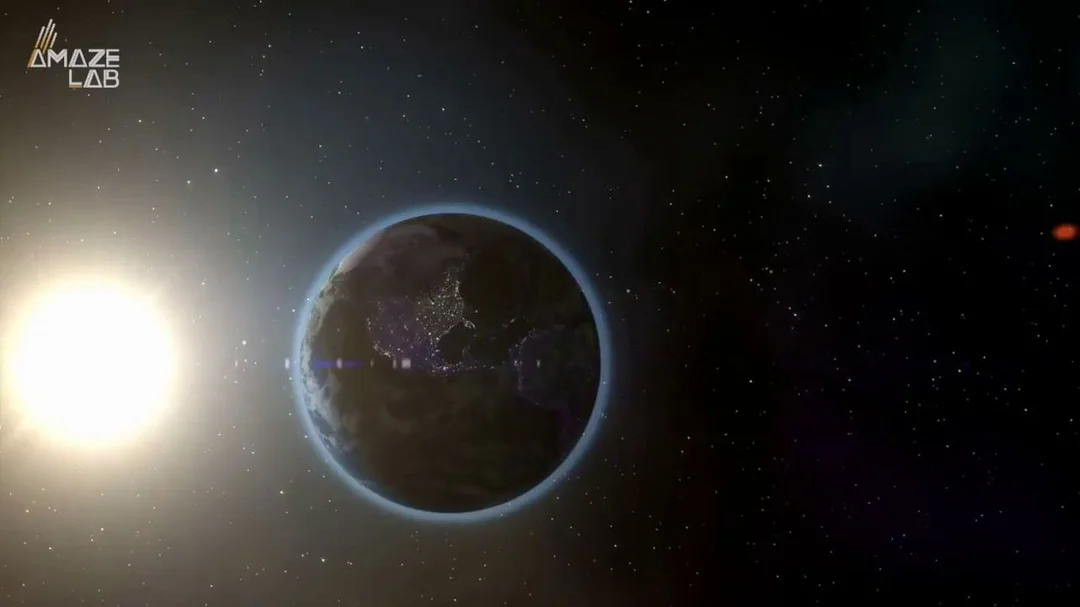
Astronomers Baffled by Perfectly Spherical Object ‘Teleios’ Discovered in the Milky Way: A Cosmic Mystery Unveiled
A cosmic puzzle has emerged in our very own Milky Way galaxy, leaving astronomers scratching their heads. A remarkably spherical object, dubbed Teleios (Greek for 'perfect'), has been detected, challenging existing understandings of celestial phenomena. Visible only in radio wavelengths, this mysterious sphere displays an almost mathematically perfect symmetry, unlike most astronomical objects.

Discovery and Initial Observations
Astronomers from Western Sydney University recently stumbled upon Teleios in data from the Australian Square Kilometre Array Pathfinder (ASKAP). Cataloged as G305.4-2.2, the object stands out due to its near-perfect spherical form, a rarity in the cosmos. Lead astrophysicist Miroslav Filipović notes its unique nature, stating that further investigation is needed to fully understand its formation.
Ruling Out the Usual Suspects
The researchers initially ruled out several potential explanations for Teleios. It's not a planetary nebula from a dying star, nor a Wolf-Rayet bubble created by massive stars. Even the far-fetched idea of a Dyson sphere (a hypothetical megastructure built by an advanced alien civilization) was dismissed due to the absence of infrared emissions.

Supernova Remnant: The Leading Theory
Currently, the leading theory points toward Teleios being a supernova remnant. Supernovae, stellar explosions, eject matter into space, forming expanding bubbles. However, perfect spherical symmetry is rare for these remnants, usually disrupted by asymmetric explosions or uneven interstellar environments. The perfect circularity of Teleios suggests either an exceptionally symmetric stellar explosion or incredibly uniform surrounding space.
Researchers speculate that Teleios originated from a Type Ia supernova, occurring when a white dwarf star absorbs too much matter and explodes. While this aligns with the object's characteristics, further observation is vital for definitive confirmation.
Distance and Size Ambiguity
Pinpointing Teleios' exact characteristics has been challenging. Based on low luminosity, researchers have estimated two possible distances from Earth: roughly 7,175 light-years and about 25,114 light-years. This distance uncertainty translates to significant size variations. At the nearer distance, Teleios would be approximately 46 light-years in diameter, whereas the farther distance would place it at a massive 157 light-years across. Age estimates vary accordingly, ranging from less than 1,000 years to over 10,000 years old.

Further Research Needed
More detailed, multi-frequency observations are needed to fully understand Teleios. Current technology limitations hamper a complete characterization, but advancements in radio astronomy promise more detailed insights in the future.
Why This Matters
The discovery of a perfectly circular radio object in our galaxy has vast implications. Such unusual cosmic events often spark refinements in theoretical models and a deeper understanding of astrophysical processes. This challenges conventional understanding of supernova explosions. If confirmed as a supernova remnant, Teleios could reveal previously unknown explosion mechanics or unique interstellar conditions.
The scientific community is eagerly awaiting further research on this perfect cosmic circle, reminding us that even within our well-studied Milky Way, exciting and unexpected discoveries are still waiting to be found.
What do you think is the most plausible explanation for the perfect spherical shape of Teleios? Share your thoughts and theories in the comments below!